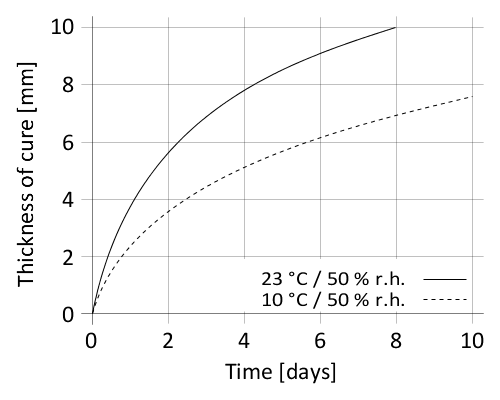Sikaflex®-291i
Sikaflex®-291i is a non-sag 1-component polyurethane sealant specifically developed for the marine market, which cures on exposure to atmospheric moisture. Sikaflex®-291i meets in addition the low spread of flame requirements set out by the International Maritime Organisation (IMO).
- Wheelmark approved
- Highly elastic
- Low odour
- Non-corrosive
- Can be painted
- Bonds well to a wide variety of marine substrates
- Solvent free, very low VOC and isocyanate content
PRODUCT BENEFITS
- Wheelmark approved
- Highly elastic
- Low odour
- Non-corrosive
- Can be painted
- Bonds well to a wide variety of marine substrates
- Solvent free, very low VOC and isocyanate content
Usage
Sikaflex®-291i is a multipurpose product used in marine constructions. It is suitable for making elastic, vibration-resistant joint seals, and can also be used for a variety of interior sealing applications. Sikaflex®-291i bonds extremely well to the materials commonly used in marine construction like wood, metals, metal primers and paint coatings (2-C systems), ceramic materials and plastics (GRP, etc.). Sikaflex®-291i must not be used to seal plastics that are prone to stress cracking (e.g. PMMA, PC, etc.). Tests with actual substrates and conditions have to be performed ensuring adhesion and material compatibility.Packaging
| Mini Unipack | 70 ml |
| Cartridge | 300 ml |
| Unipack | 400 ml |
Product Details
| Chemical base | 1-component polyurethane | |
| Color (CQP001-1) | White, grey, black, brown | |
| Cure mechanism | Moisture-curing | |
| Density (uncured) | depending on color | 1.3 kg/l |
| Non-sag properties | Good | |
| Application temperature | ambient | 10 ─ 40 °C |
| Skin time (CQP019-1) | 60 minutes A | |
| Open time (CQP526-1) | 45 minutes A | |
| Curing speed (CQP049-1) | (see diagram) | |
| Shrinkage (CQP014-1) | 2 % | |
| Shore A hardness (CQP023-1 / ISO 48-4) | 40 | |
| Tensile strength (CQP036-1 / ISO 527) | 1.8 MPa | |
| Elongation at break (CQP036-1 / ISO 37) | 700 % | |
| Tear propagation resistance (CQP045-1 / ISO 34) | 7 N/mm | |
| Service temperature (CQP513-1) |
4 hours 1 hour | -50 ─ 90 °C 120 °C 140 °C |
| Shelf life | 15 months B |
| CQP = Corporate Quality Procedure | A) 23 °C / 50 % r. h. | B) storage below 25 °C |
CURE MECHANISM
Sikaflex®-291i cures by reaction with atmospheric moisture. At low temperatures the water content of the air is generally lower and the curing reaction proceeds somewhat slower (see diagram 1).

Diagram 1: Curing speed for Sikaflex®-291i
CHEMICAL RESISTANCE
Sikaflex®-291i is generally resistant to fresh water, seawater, diluted acids and diluted caustic solutions; temporarily resistant to fuels, mineral oils, vegetable and animal fats and oils; not resistant to organic acids, glycolic alcohol, concentrated mineral acids and caustic solutions or solvents.
Application
Surface Preparation
Surfaces must be clean, dry and free from grease, oil and dust.
Surface treatment depends on the specific nature of the substrates and is crucial for a long lasting bond. Suggestions for surface preparation may be found on the current edition of the appropriate Sika® Pre-Treatment Chart. Consider that these suggestions are based on experience and have in any case to be verified by tests on original substrates.
Application
Sikaflex®-291i can be processed between 10 °C and 40 °C but changes in reactivity and application properties have to be considered. The optimum temperature for substrate and sealant is between 15 °C and 25 °C.
Sikaflex®-291i can be processed with hand, pneumatic or electric driven piston guns.
Tooling and finishing
Tooling and finishing must be carried out within the skin time of the sealant. It is recommended using Sika® Tooling Agent N. Other finishing agents must be tested for suitability and compatibility prior the use.
Removal
Uncured Sikaflex®-291i can be removed from tools and equipment with Sika® Remover-208 or another suitable solvent. Once cured, the material can only be removed mechanically. Hands and exposed skin have to be washed immediately using Sika® Cleaner-350H cleaning towels or a suitable industrial hand cleaner and water.
Do not use solvents on skin!
Overpainting
Sikaflex®-291i can be best painted after formation of a skin. Painting could be improved by treating the joint surface with Sika® Aktivator-100 or Sika® Aktivator-205 prior to paint process. If the paint requires a baking process (> 80 °C), best performance is achieved by allowing the sealant to fully cure first. All paints have to be tested by carrying preliminary trials under manufacturing conditions.
The elasticity of paints is usually lower than that of sealants. This could lead to cracking of the paint in the joint area.
FAQ
Winches, windlasses are subject to high mechanical stresses, fans, hatches and hatch covers to low stresses. To make sure your fittings are sealed strongly we recommend the following:
Bedding and sealing of fittings subject to high mechanical stresses
Deck fittings such as chain plates, winches and guide rollers must absorb very high dynamic stresses. For this purpose, a high-performance product, Sikaflex®-292i, our assembly adhesive, should be used in conjunction with additional mechanical fixings.
Bedding and sealing of fittings subject to minimal mechanical stresses
Deck fittings, such as ventilators and cover strips, need to be waterproofed but are not subject to high tensile or torsion stresses.
These fittings can be effectively bedded and sealed with only Sikaflex®-291i or if the joint remains visible and is exposed to weathering, then use Sikaflex®-591 or Sikaflex®-295 UV.
Check pre-treatment chart for surface preparation of substrates prior to application and follow application steps according to application guidelines.
For further details read our application guidelines and our pre-treatment chart.
